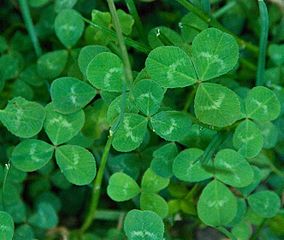Hi :) In this post we'll identify and describe the main anatomical features of the blood supply to the central nervous system.
Cerebral Blood Supply
Arteries
Although the brain of a dog is quite small, it uses up to 8% of the total cardiac output. Within the brain exists a structure known as the arterial circle of the brain. This is an elongated arterial ring located on the ventral surface of the brain and is formed by the right and left internal carotids and the basilar artery. Three vessels which supply the cerebrum arise from either side of the arterial circle. These are the rostral, middle and caudal cerebral arteries. The arterial circle also gives rise to the rostral cerebellar arteries and the caudal cerebellar arteries arise from the basilar artery, these supply the cerebellum. All of these vessels form anastomoses with adjacent vessels on the surface of the brain. The arterial circle ensures that a constant blood pressure in the terminal arteries is maintained and that alternate routes for blood flow to the brain are present.
Veins
Within the cranial dura mater, between the periosteal and meningeal layers, are venous passages into which the veins of the brain and its encasing bone drain. These passages are also known as sinuses of the dura mater but are not found only in the dura. Blood flows from these sinuses to veins around the head of the animal and to the vertebral venous plexuses. The sinuses lack a tunica media and adventitia in their walls and contain no valves. They are divided into dorsal and ventral sets of sinuses and freely intercommunicate.
The Dorsal Set
This includes the dorsal sagittal sinus which runs from the midline region of the cribiform plate dorsocaudally in the midline within the falx cerebri. At the most caudal end of the brain there is a confluence of sinuses which run ventrally to exit the cranium and enter the internal maxillary, internal jugular and vertebral veins. The confluence also includes the paired transverse sinus and occasionally includes the straight sinus (this depends on its conformation which may vary between individuals). These sinuses exit the cranium and enter the internal maxillary, internal jugular and vertebral veins.
The Ventral Set
These sinuses drain the ventral aspect of the brain and have connections to the face, nasal cavity, orbit and upper teeth. The ventral cavernous sinuses, which are paired, are the largest ventral sinuses and arise from the orbital fissures. Additionally, petrosal sinuses are located ventrolaterally. The ventral set makes connections with the internal vertebral venous plexuses caudally.
Spinal Blood Supply
Arteries
Three arteries travel along the length of the spinal cord. Along the ventral midline of the spinal cord, in the spinal fissure, lies the ventral spinal artery. In addition, there are paired dorsolateral spinal arteries which run close to the furrows from which the dorsal roots of the spinal nerves originate. At every intervertebral foramen, dorsal and ventral root arteries join this system by linking through anastomoses to form an arterial ring.
Branches of the ventral spinal artery supply the grey matter of the spinal cord as well as the adjacent layers of the white matter by entering through the ventral fissure. The bulk of the white matter is supplied by radial twigs of the dorsolateral arteries as well as the surface arterial plexus.
Veins
Ventrolaterally within the epidural space lie a pair of vertebral venous plexuses which are thin walled and valveless and travel along the length of the vertebral column. They drain blood from the vertebrae, the adjacent musculature and the structures within the vertebral canal. Within the vertebral canal they are connected by intervertebral veins while outside they are connected by extravertebral veins. In the occipital region they connect with the ventral occipital and cavernous sinuses.
 |
| Venous Drainage of the Spinal Cord |
The Blood-Brain Barrier
The brain's blood vessels have the ability to restrict certain substances from accessing brain tissue. This is known as the blood-brain barrier and contributes to a stable environment for the neurons and glial cells of the central nervous system. In most capillaries, water soluble compounds leave through gaps between the endothelial cells of the capillary and this is relatively unrestricted. In the capillaries of the brain this is restricted because the gaps between the endothelial cells are blocked by tight junctions and the exchange of solutes in the blood is highly selective. The capillaries of the brain are also surrounded by a layer of glial astrocytic 'end feet' which are thought to contribute to the formation of the capillary endothelial tight junctions during development.
Some parts of the brain such as the pineal body, hypothalamus, pituitary gland and choroid plexuses (known as the circumventricular organs) are highly vascular and their capillaries do not form tight junctions and the blood-brain barrier is ineffective.
That's it for this post. If you have any questions please feel free to ask :)









